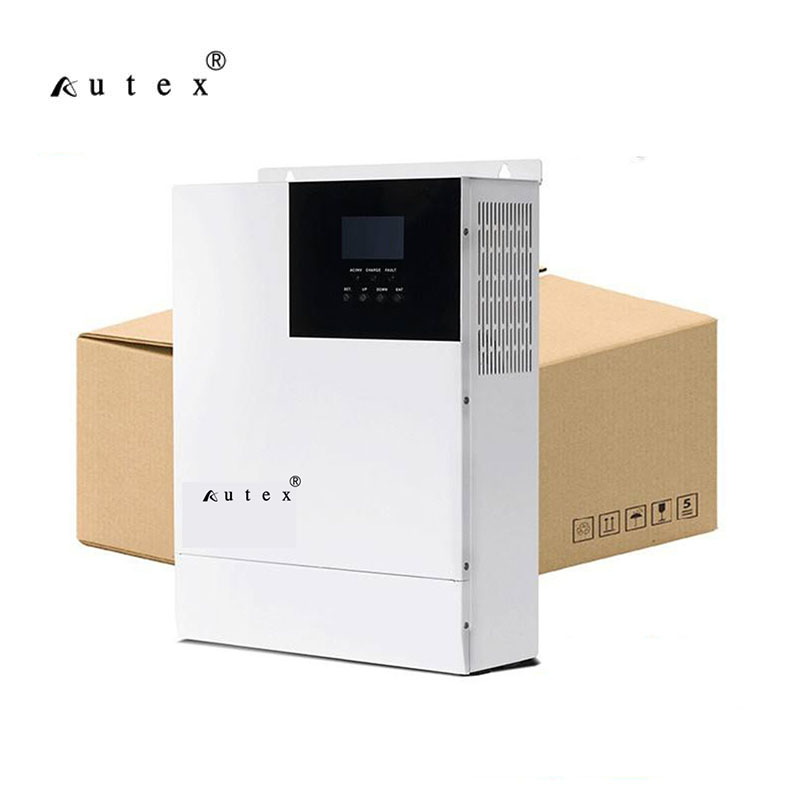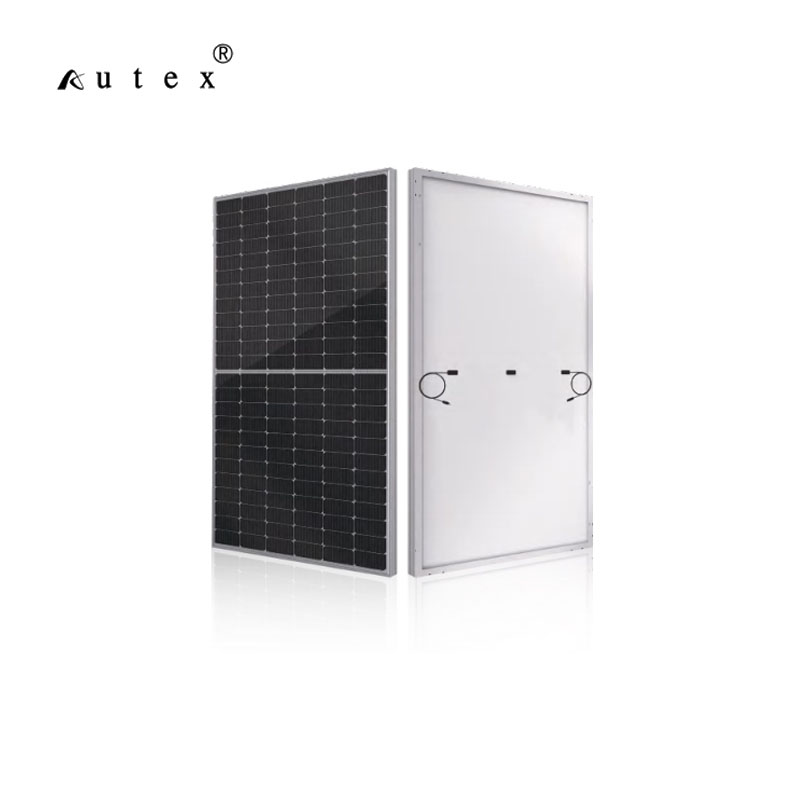Partner content: This content was created by a business partner of Dow Jones and researched and written independently of the MarketWatch newsroom. Links in this article may result in us earning a commission. Learn More
Learn about the typical solar panel wattages used in rooftop installations and how to estimate the ideal system capacity for your home. Solar Panel Inverter

Leonardo David is an electromechanical engineer, MBA, energy consultant and technical writer. His energy-efficiency and solar consulting experience covers sectors including banking, textile manufacturing, plastics processing, pharmaceutics, education, food processing, real estate and retail. He has also been writing articles about energy and engineering topics since 2015.
The rated wattage of a solar panel indicates its electricity output when tested under ideal laboratory conditions. In real-life installations, actual solar panel wattage depends on external factors such as sunshine and ambient temperature.
The rated wattage specified by the panel manufacturer can give you an idea of how much electricity you can expect to generate. In this article, we at the Guides Home Team explain solar panel wattage, how to figure out the number of solar panels you’d need to power your home and what you’re likely to pay.
Get your free solar installation quote
With the sunlight conditions of a given location, solar panels with a higher rated wattage produce more kilowatt-hours (kWh) of electricity per year than panels with a lower rating. To get an idea of how much energy solar panels can produce in your location, you can use the World Bank Global Solar Atlas .
As you can see on the atlas, western states like California and Arizona enjoy many more annual sun hours than northeast states like New York and Massachusetts. However, favorable conditions for solar panels exist throughout the U.S.
Assuming you have a site with decent sunshine and no shade, each kilowatt of solar capacity can generate more than 1,400 kWh per year. The following table summarizes how much you can expect to generate with different system capacities:
With a higher PVOUT value, the figures in the table above increase accordingly. For example, if you live in a sunny location where the Global Solar Atlas shows 1,700 kWh/kWp, a 6-kW system would yield 10,200 kWh/year.
The electricity output of photovoltaic modules depends on the direct sunlight reaching their surface. That’s why solar panel productivity is higher in sunny locations and lower in cloudy weather conditions or in places where excessive shade comes from surrounding buildings. Under identical sunlight and temperature conditions, the energy output of solar panels depends on their efficiency.
Let’s discuss the primary factors that determine the amount of electricity generated by solar panels.
Solar panel efficiency can range from less than 10% to more than 20%. The efficiency rating is simply the amount of sunlight that gets converted into electricity, when the panel is tested under ideal conditions in a laboratory. As of 2023, the most efficient solar panels available in the market range from 20.60% to 22.80%, with SunPower panels at the top of the efficiency ranking.
In actual installations, the efficiency of solar panels is affected by factors like dust accumulation and high temperatures. You can prevent dust buildup by having your solar panels cleaned one or two times a year. There’s nothing you can do about high temperatures, and panels lose from 0.30% to 0.40% of their productivity for every Celsius degree of temperature rise. Fortunately, this is a temporary effect, and the lost efficiency gets recovered when panels cool.
There are three main types of solar panels: monocrystalline, polycrystalline and thin-film. Here’s what you need to know about them.
Thanks to their high efficiency, monocrystalline panels have the highest kilowatt-hour output per square foot covered. Industry experts consider them the best solar panels for homes, especially if roof space is limited.
You can classify solar panels based on the number of their photovoltaic cells. Most panels have either a 60-cell design in a 6×10 arrangement or a 72-cell design in a 6×12 layout.
Some solar manufacturers offer an in-between size and design with 66 cells. Some solar brands use half-cells with a higher efficiency, but the overall solar panel size does not change. They have 120, 132 or 144 half-cells in the same space (instead of 60, 66 or 72 full-sized cells).
To increase the energy produced by solar panels, make sure they face the sun for as much time as possible throughout the year. The sun’s position in the sky constantly changes, and the ideal tilt angle for solar panels depends on your geographic location. The sun is lower in the sky as you reside farther north, and this means solar panels must be tilted more to increase the hours of direct sunlight.
Other than the optimal tilt angle, you must also consider the orientation of solar panels. In northern hemisphere countries like the U.S., it makes sense to have your panels face south because there is more sunlight coming from that half of the sky. However, west-facing and east-facing panels are useful in some applications:
As you can see in the Global Solar Atlas, annual sunshine depends on your geographic location. If two 6-kW solar power systems are installed in different states and one of them gets 30% more sunshine during the year, energy production also increases by around 30%.
The number of solar panels a home needs depends on three things: sunshine, home electricity consumption and the panel wattage used. For an accurate calculation and a professional design, you should contact one of the top-rated solar installation companies .
You can estimate the number of solar panels needed using the following information:
U.S. homes consume an average of 10,632 kWh/year, according to the Energy Information Administration . You can search for your location in the Global Solar Atlas and click to display the PVOUT value. For example, if you get 1,400 kWh/kWp, you can divide both values to get an estimated capacity of 7.6 kW (or 7,600 W).
As of 2023, the average cost of solar panels in the U.S. is $2.85/watt. You can expect to pay around $21,945 for a 7.7-kW system. However, you get a 30% federal solar tax credit , thanks to the Inflation Reduction Act. The tax credit in this case is $6,583.50, and the net cost of your system drops to $15,361.50.
Solar panels don’t produce electricity evenly throughout the day. Their output gradually increases during the morning, reaching a peak around noon before decreasing in the afternoon. Because many homes are empty during the day, solar panels often generate excess energy that doesn’t get consumed right away. Homeowners have two options to deal with this excess electricity, and each have their pros and cons:
A battery system gives you the option of storing solar electricity to be used at any time, even at night when panels are no longer productive. Solar batteries also qualify for the 30% federal tax credit, and additional incentives may be available from your local government or utility company. If you purchase a solar battery capable of operating off-grid, you can use it as a backup power system during blackouts. However, home battery systems are expensive, and they can add more than $10,000 to your solar installation costs.
Exporting surplus solar power to the grid is a convenient option because you can trade unused electricity for power bill credits. However, the kWh price you sell your electricity for is normally lower than the retail price you pay, which means you don’t save the full value of each kWh. States have different buy-back rates, so your location matters. And many states don’t even have a net metering or solar buyback policy, which means you don’t get credit for sending excess energy to the grid. Battery storage becomes your only option in this case.
Assuming favorable sunlight conditions, a 500-watt panel will produce around 2 kWh per day, and more than 700 kWh per year.
This will depend on the individual wattage of the solar panels you choose. Simply divide the total capacity required by the panel wattage:
Residential solar panels have typical power ratings of around 350-400 W. Under favorable sunlight conditions, a panel of this wattage can generate over 1.5 kWh of electricity per day.
According to the Energy Information Administration, U.S. homes consume 10,632 kWh/year, on average. With decent sunshine, a 2,000-watt solar energy system generates more than 2,800 kWh/year, covering 26% of the electricity usage of a typical home; 2,800 kWh/year is roughly equivalent to the annual consumption of a three-ton central air conditioner.
Leonardo David is an electromechanical engineer, MBA, energy consultant and technical writer. His energy-efficiency and solar consulting experience covers sectors including banking, textile manufacturing, plastics processing, pharmaceutics, education, food processing, real estate and retail. He has also been writing articles about energy and engineering topics since 2015.
Copyright © 2023 MarketWatch, Inc. All rights reserved.

Solar Panel 5kw Price By using this site you agree to the Subscriber Agreement & Terms of Use, Privacy Notice, and Cookie Notice.